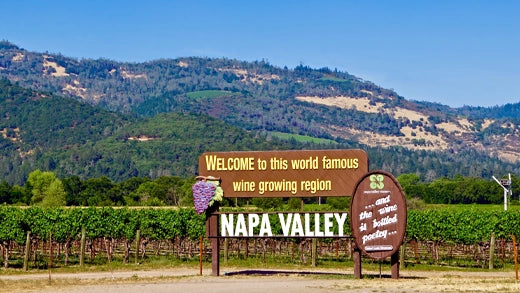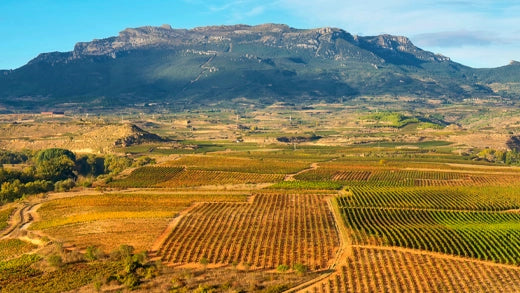
I’ve spent the last twenty years in every facet of the wine industry. I make wine in Santa Barbara. I import wine from around the world. And, I founded one of the best places online to buy quality, 90+ rated wines, Bighammerwines.com. Here’s the #1 piece of wine advice I give to wine lovers like you. Once you understand this simple concept, it will change your life forever. You’ll never buy wine in the same way again.
If you love wine, you already know it can be unnecessarily complicated. The language of wine can seem arcane and stuffy, especially if you’re just looking for some delicious juice that pairs well with your favorite patio, burger, pizza slice, friend or burrito.
Have you ever stared at a grocery store wall of wine and wondered what to buy? Most wine merchants in the U.S. sell wine by its varietal designation. You’ve likely seen the signs for Chardonnay, Cabernet Sauvignon, Pinot Noir, Sauvignon Blanc, and the ubiquitous “Red Blend” categories. The problem with this oversimplification is that there are actually thousands of types of grapes in the world. Italy alone has more than 550 unique wine grape varieties. So, this leads to the obvious question.
“How do I know if I’ll like a wine or not when it’s from a region I don’t recognize or a grape I’ve never heard of?”
The answer: Determine whether you like wines from hot climates vs. cold climates and then choose a wine based on the weather and growing conditions in the area.
Let me give you some examples.

Most Americans are trained on wines from California, which for the most part, has a hot climate. Think Napa Valley Cabernet Sauvignon and Red Blends from Paso Robles, Lodi, or Central California. These vineyards tend to be located in flat, inland valleys that can get very hot. It rarely snows in hot climate wine regions whereas in a cool climate region it generally snows there every year.
If you think about the geography of the two most famous wine regions in California, you’ll understand this difference. Napa Valley is rightfully world famous for its big, rich, deep, dark Cabernet Sauvignon based wines and red blends. The Napa Valley is inland and bakes and gets very hot, over 100 degrees in the summer. Located only 25 miles to the west lies the Sonoma Coast which is regarded as one of the premier wine regions for Pinot Noir and Chardonnay, which are grapes that thrive in cool climates. The key difference between the two regions is that the influence of the Pacific Ocean acts like an air conditioner pushing cool breezes from the cold ocean water over the land. Anyone who has been to the region knows about foggy mornings and misty evenings.
The key characteristics of wines grown in hot climates are:
- Big, bold fruit flavors (think blueberry, blackberry for reds)
- Dense, rich wines
- Higher Alcohol wines (often >14%)
- Lower Acid wines (typically acid must be added to achieve a higher pH of 3.6 or above)
- Wines that tend to have some residual sugar (2-10 grams/liter or more)
Wines grown in cool climates tend to come from wine regions with a continental climate, which is common in France and Italy. Cool climate regions are often located near large bodies of water like the Atlantic Ocean. Altitude also plays a role. Mendoza in Argentina is a hot, arid valley that produces hot climate wines, but there are vineyards that approach the Andes mountains and that are grown at higher elevations. Those vineyards are in what would be considered a cool climate.
The key characteristics of wines grown in cold climates are:
- Elegant fresh wines
- Lighter in weight, less rich (flavors of strawberry, raspberry, bing cherry for reds)
- Higher Acid driven wines that make your mouth pucker (like biting into a green apple)
- Lower Alcohol wines (often <14%)
Bordeauxis the most famous wine region in the world and it has an Atlantic, continental, generally cool climate. This is why many wine drinkers who love Cabernet Sauvignon migrate to wines from Bordeaux. However, this region in Southwest France is considerably warmer than the equally famous region of Burgundy in Northeast France, where Pinot Noir and Chardonnay wines excel.

Some other examples of cool climate vs. hot climate include:
| Cool Climate | Hot Climate |
| Champagne in NE France | Cava in Spain |
| Barolo | Brunello |
| Chablis in France | California Chardonnay |
| Rioja in Central Spain | Galicia in NW Spain |
| Loire Valley in West France | Rhone Valley in So. France |
| Oregon Willamette Valley | Washington Columbia Valley |
| Marlborough New Zealand Sauvignon Blanc | California Sauvignon Blanc |
| Northeastern Italy Trentino-Alto Adige | Southern Italy Sicily, Puglia, Calabria |
| Riesling from Alsace in France or Germany | Riesling from Australia |
One final thing to note for wine lovers who like to collect or store their wine for years. Wines produced in cool climate wine regions with a naturally higher acidity tend to age longer and better. High quality riesling produced in the Mosel region in Germany can age 80 or more years whereas Riesling from hot climates tends to fizzle out much sooner. Similarly, the red wines of Bordeaux are well known to be among the longest-lived red wines and certainly have a much better aging potential and track record than their counterparts from Napa Valley.
Ultimately, you might find that you love wines from both cool climate and hot climate wine regions depending on your mindset and the setting in which you’re drinking wines. Cool climate wines can be refreshing, zippy, and easy to pair with a wide variety of foods. Hot climate wines can be warming and excellent with meat dishes and in the winter.
Now that you’re armed with this information, you’ll be on your way to choosing the best wines whatever your preferences.
Big Hammer Wines
The wine experts at Big Hammer Wines taste thousands of wines every year from around the globe, looking for quality and value. This special offer reflects the passion we have for our clients.
Discover the world through its wines, Click Here! Visit Bighammerwines.com and become a wine expert!


